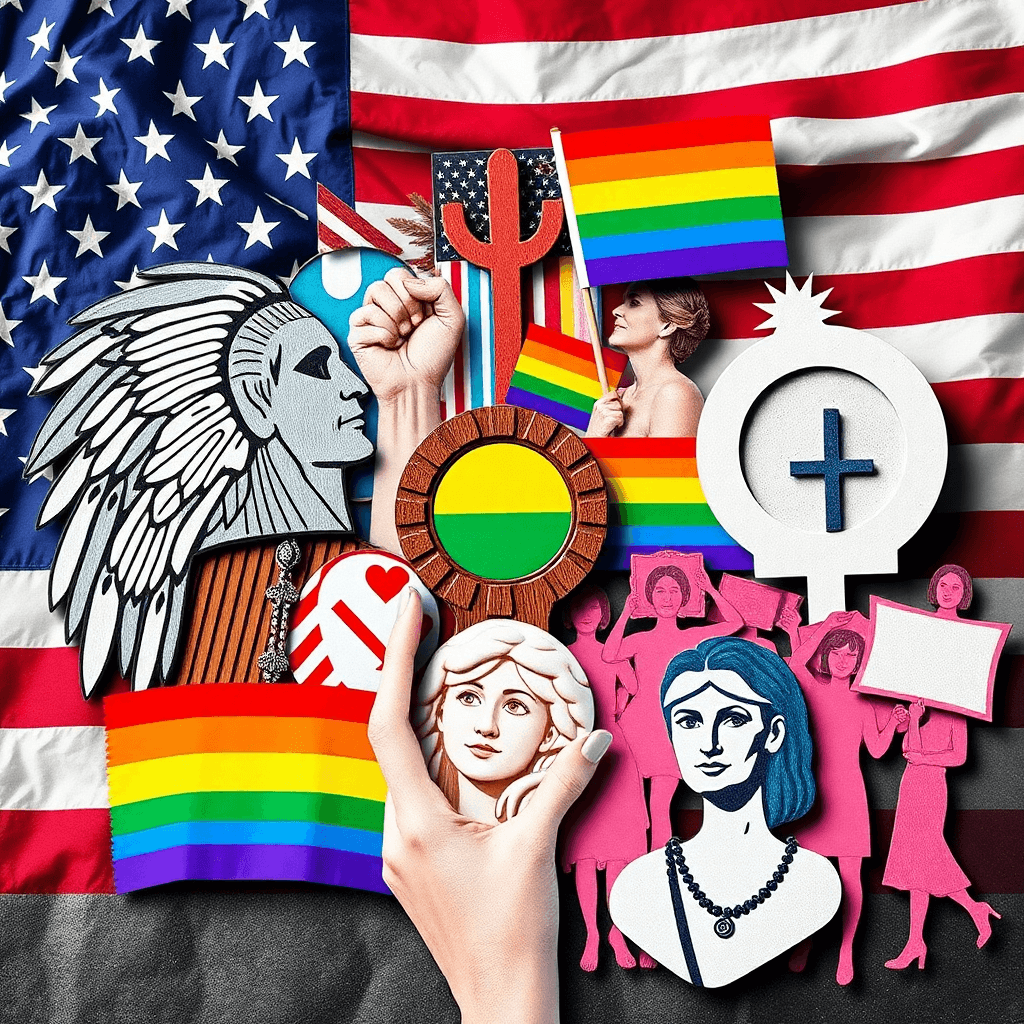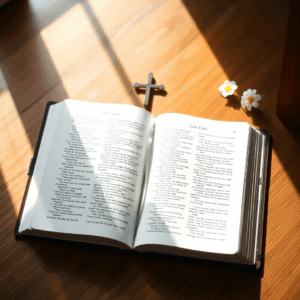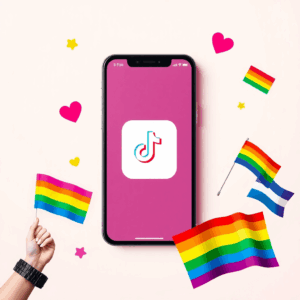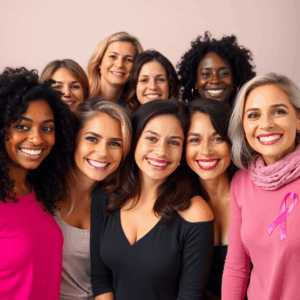What common goals did Native Americans, gay and lesbian citizens, and women share in their quests for equal rights?

May 20, 2025 by Joshua Gonzales
The fight for equal rights in America shows interesting similarities between Native Americans, gay and lesbian citizens, and women. These different groups have faced ongoing oppression, discrimination, and marginalization throughout U.S. history, leading to powerful movements for social change.
Native Americans fought to preserve their cultural heritage while securing basic rights as citizens. Gay and lesbian individuals challenged deep-rooted prejudices to gain recognition of their fundamental human dignity. Women battled entrenched patriarchal systems to achieve autonomy and equal opportunities in all spheres of life.
Even though these groups have different experiences, they all want the same things:
- Recognition of their full humanity and inherent rights
- Protection from discrimination in daily life
- Equal access to opportunities and resources
- Fair representation in political processes
- Freedom from violence and harassment
Recognizing these shared goals emphasizes how civil rights movements are connected. Their combined struggle shows how various communities can come together for common causes while still honoring their unique identities and specific needs. This analysis uncovers the universal human longing for dignity, respect, and equal treatment under the law.
Historical Context of Rights Movements
The struggle for equal rights in America reveals a pattern of systemic discrimination against Native Americans, LGBTQ+ individuals, and women. Native Americans faced forced relocation, cultural suppression, and the denial of basic citizenship rights until 1924. The federal government implemented policies like the Indian Removal Act and forced assimilation through boarding schools, devastating tribal communities and their heritage.
Women’s exclusion from political participation, property ownership, and professional opportunities marked their historical experience. The denial of voting rights until 1920 symbolized broader societal restrictions on women’s autonomy and economic independence.
LGBTQ+ individuals endured criminalization, medical pathologization, and social ostracism. Laws prohibited same-sex relationships, while discrimination in employment and housing remained legal well into the late 20th century.
These groups responded by building powerful grassroots movements:
- Native American activism intensified through the American Indian Movement (AIM) in the 1960s
- Women’s liberation gained momentum through organizations like NOW and consciousness-raising groups
- LGBTQ+ resistance emerged visibly after the 1969 Stonewall uprising
The social upheaval of the 1960s created conditions for these movements to challenge institutional discrimination. The Civil Rights Movement provided tactical inspiration and a blueprint for organized resistance. Each group developed distinct strategies while learning from other movements’ successes and setbacks in confronting deeply entrenched prejudices.
Common Goals in the Quest for Equal Rights
Native Americans, LGBTQ+ individuals, and women have come together with several key goals in their fight for equality. These marginalized groups have important aims that go beyond their individual struggles, creating a powerful united voice for social change.
The Fight Against Systemic Discrimination
One of the main goals of these movements is to eliminate institutional barriers. Each group has had to deal with deeply ingrained biases:
- Native Americans are challenging unfair land policies and cultural suppression
- LGBTQ+ individuals are fighting against discrimination in the workplace and housing
- Women are combating wage gaps based on gender and limitations in their careers
Legal Protection Initiatives
Another central focus for all three movements is the push for comprehensive anti-discrimination laws. These groups are advocating for:
- Laws that ensure equal opportunities in employment
- Regulations that promote fairness in housing
- Measures that protect individuals from hate crimes
- Access to public services without discrimination
Recognition from Government Bodies
Formal recognition by government institutions is also a significant milestone. This includes:
- Rights related to the sovereignty of Native American tribes
- Marriage equality for LGBTQ+ individuals
- Reproductive rights and bodily autonomy for women
The implementation of civil rights laws is crucial in achieving these shared goals. Each group has worked tirelessly to secure legal frameworks that guarantee equal protection under the law. Their combined efforts have led to landmark victories such as the Indian Civil Rights Act, the Equality Act, and the Equal Rights Amendment.
These movements understand that simply having legal recognition is not enough; it must also be put into practice. They continue to advocate for stronger enforcement mechanisms and accountability measures to ensure that their rights are actively protected in everyday life.
The intersection of these goals shows how different marginalized groups face similar challenges in their fight for equality. By acknowledging these shared objectives, activists can create stronger alliances and support networks across various movements.
1. Elimination of Discrimination: A Shared Goal Across Movements
Throughout American history, Native Americans, gay and lesbian citizens, and women have all faced different but interconnected forms of systemic discrimination. The struggles of each group shed light on the widespread nature of institutional bias and the ongoing battle for equality.
Forms of Discrimination Faced by Different Groups
Native Americans:
- Forced relocation from ancestral lands
- Denial of citizenship rights until 1924
- Restricted access to traditional religious practices
- Children separated from families through boarding schools
LGBTQ+ Community:
- Criminalization of same-sex relationships
- Workplace termination based on sexual orientation
- Medical discrimination, including HIV/AIDS crisis
- Military service restrictions under “Don’t Ask, Don’t Tell”
Women:
- Denial of property ownership rights
- Exclusion from higher education
- Workplace harassment and wage inequality
- Limited reproductive healthcare access
Key Milestones in Anti-Discrimination Progress
These victories represent hard-fought battles against systemic oppression. The discrimination faced by these groups shares common threads: denial of basic rights, economic marginalization, and social stigmatization. Each success story builds upon the collective strength of these movements, demonstrating the power of persistent advocacy in dismantling discriminatory systems.
Native Americans
- Indian Civil Rights Act (1968)
- American Indian Religious Freedom Act (1978)
LGBTQ+ Community
- Lawrence v. Texas decriminalization (2003)
- Marriage equality recognition (2015)
Women’s Rights
- Equal Pay Act (1963)
- Title IX Education Amendments (1972)
2. Recognition and Protection Under the Law: A Common Objective for Equality Advocates
Legal recognition is a crucial aspect of the struggle for equal rights. Without legal protections, marginalized communities are at risk of facing discrimination, harassment, and unfair treatment in various areas of life.
Native American Legal Victories
- The Indian Civil Rights Act of 1968 granted Native Americans constitutional rights within tribal jurisdictions
- The Indian Child Welfare Act of 1978 protected Native American children from arbitrary removal from their families
- The Native American Graves Protection and Repatriation Act of 1990 safeguarded tribal cultural artifacts
LGBTQ+ Legal Milestones
- Lawrence v. Texas (2003) decriminalized same-sex relationships
- United States v. Windsor (2013) struck down parts of DOMA
- Obergefell v. Hodges (2015) legalized same-sex marriage nationwide
Women’s Legal Achievements
- The Equal Pay Act of 1963 mandated equal wages for equal work
- Title IX of the Education Amendments (1972) prohibited sex-based discrimination in education
- The Pregnancy Discrimination Act (1978) protected women’s workplace rights
These legal victories show how powerful persistent advocacy can be. Each successful case set a precedent for future challenges to discriminatory practices. The impact goes beyond just those directly affected – legal recognition also influences social attitudes, institutional policies, and civil rights protection frameworks.
New legal battles are still being fought as these communities discover new areas that need protection. Issues like tribal sovereignty, transgender rights, and workplace harassment policies are ongoing challenges in the fight for comprehensive legal safeguards.
3. Equal Access to Employment, Education, Housing, and Public Accommodations: A Shared Struggle for Fairness
The quest for equal access remains a defining challenge across marginalized communities. Native Americans, LGBTQ+ individuals, and women continue to face significant barriers in essential areas of life:
Workplace Equality Challenges
- Native Americans experience unemployment rates 2-3 times higher than the national average
- Women earn approximately 82 cents for every dollar earned by men
- LGBTQ+ individuals face workplace discrimination in 29 states without explicit legal protections
Educational Disparities
- Native American students show a 73% high school graduation rate compared to 86% national average
- Women represent only 28% of STEM workforce positions
- LGBTQ+ youth report higher rates of bullying and harassment in educational settings
Housing Discrimination
- Native Americans face limited access to mortgage loans on tribal lands
- Same-sex couples experience higher rejection rates in rental applications
- Single women face additional scrutiny from landlords and mortgage lenders
Public Accommodation Barriers
- Native Americans report discrimination in restaurants and retail establishments
- LGBTQ+ individuals face denial of services based on religious exemptions
- Women encounter restricted access to certain venues and facilities
These disparities create compounding effects, limiting economic mobility and social advancement opportunities. Each group’s struggle intersects with others, creating a complex web of discrimination that requires systematic change across multiple sectors. The persistence of these barriers highlights the need for continued advocacy and policy reform to ensure genuine equal access for all communities.
Recent data shows these challenges remain deeply embedded in institutional structures, requiring both legal reform and cultural transformation to address effectively. Success in one area often catalyzes progress in others, demonstrating the interconnected nature of these equality struggles.
4. Securing Political Rights and Participation: An Overlapping Aim Amongst Activists
Political representation is a fundamental aspect of democracy, but marginalized communities have faced significant obstacles in achieving meaningful participation in the political process. The fight for political rights brings together Native Americans, LGBTQ+ individuals, and women in their pursuit of equal representation and influence in government.
Native American Voting Rights
- The 1924 Indian Citizenship Act granted citizenship to Native Americans
- Many states continued to deny voting rights through literacy tests and poll taxes until 1957
- The Native American Voting Rights Act of 2019 addresses ongoing voter suppression tactics
Women’s Suffrage Movement
- The 19th Amendment (1920) secured women’s right to vote after decades of activism
- The League of Women Voters emerged to educate and empower female voters
- Women continue fighting for equal representation in political offices
LGBTQ+ Political Participation
- Harvey Milk became one of the first openly gay elected officials in 1977
- The Victory Fund supports LGBTQ+ candidates running for public office
- Recent years have seen unprecedented numbers of LGBTQ+ representatives in Congress
These movements share common strategies in their fight for political rights:
- Grassroots organizing and voter registration drives
- Legal challenges to discriminatory voting practices
- Coalition building with allied organizations
- Public education campaigns about voting rights
- Advocacy for inclusive voter ID laws
The struggle for political representation is ongoing as these groups work to dismantle systemic barriers and increase their presence in elected positions. Each victory in securing voting rights strengthens democratic participation and creates pathways for future generations of leaders from marginalized communities.
Unique Aspects Within Shared Goals: Recognizing Diversity in Activism
The quest for equal rights unites diverse groups through shared objectives, yet each movement carries distinct characteristics shaped by unique historical contexts and cultural identities. Native American activism stands apart through its emphasis on tribal sovereignty – a fundamental right to self-governance and cultural preservation that extends beyond standard civil rights demands.
Native American Activism
Native American activists pursue:
- Recognition of treaty rights
- Protection of sacred lands
- Preservation of traditional languages
- Authority over tribal resources
- Self-determination in education
LGBTQ+ Movement
The LGBTQ+ movement focuses on specific challenges:
- Legal recognition of relationships
- Protection against discrimination based on gender identity
- Healthcare access specific to transgender individuals
- Family rights including adoption
Women’s Rights Advocacy
Women’s rights advocates address unique concerns:
- Reproductive healthcare access
- Workplace harassment
- Gender-based violence
- Pay equity
- Maternity rights
These distinct elements create rich tapestries of activism within each movement. Native American communities fight to maintain their cultural identity while pursuing broader equality goals. LGBTQ+ activists work to challenge gender norms alongside securing basic rights. Women’s groups address gender-specific healthcare needs while pushing for workplace equality.
The intersection of these movements reveals how different forms of discrimination can compound and create unique challenges. A Native American lesbian woman might face triple discrimination, requiring her to engage with multiple advocacy movements simultaneously. This complexity demonstrates why recognizing diverse experiences strengthens collective efforts toward equality.
Methods and Strategies Used Across Movements: Learning from Each Other’s Tactics
The power of shared activism tactics has proven instrumental in advancing civil rights across different movements. Native Americans, LGBTQ+ individuals, and women’s rights advocates have developed effective strategies that transcend their specific causes.
Key Protest Tactics:
- Non-violent resistance and civil disobedience
- Strategic media engagement
- Legal challenges and court battles
- Coalition building with allied organizations
- Public education campaigns
- Economic boycotts
The women’s suffrage movement pioneered peaceful protest strategies through organized marches and picketing. These tactics were later adapted by LGBTQ+ activists during the Stonewall era and subsequent pride demonstrations. Native American activists incorporated similar approaches during the occupation of Alcatraz and the Trail of Broken Treaties.
Cross-Movement Learning:
- The use of sit-ins, popularized during the civil rights movement, became a powerful tool for women’s rights activists protesting workplace discrimination
- LGBTQ+ activists adopted the consciousness-raising groups model from feminist movements
- Native American protesters utilized media attention strategies learned from other civil rights campaigns
The practice of documenting discrimination cases and building legal precedents has proven particularly effective. Women’s rights organizations established this approach through landmark cases like Reed v. Reed, while LGBTQ+ advocates achieved success with cases such as Obergefell v. Hodges. Native American legal teams have similarly fought for tribal sovereignty through strategic litigation.
These movements have demonstrated that successful activism tactics can be adapted and refined across different causes. By sharing knowledge and resources, marginalized groups have strengthened their collective ability to challenge systemic inequality and push for meaningful change.
Interestingly, the strategies used in activism can also provide insights into other areas such as online dating. For instance, exploring the complexities of mail order bride sites could reveal valuable lessons about forming successful connections with foreign women, which echoes the broader theme of learning from each other’s experiences across different fields.
Impactful Legacy of Shared Goals: Shaping a More Inclusive Society Today
The collective pursuit of equal rights by Native Americans, LGBTQ+ individuals, and women has reshaped American society’s fundamental values. These movements have sparked transformative changes in:
- Workplace Culture: Companies now implement diversity policies, anti-discrimination training, and inclusive hiring practices
- Educational Systems: Schools are beginning to adopt a culturally responsive sustaining education framework, integrating diverse perspectives into curricula and celebrating contributions from all communities
- Media Representation: Increased visibility of marginalized voices in entertainment, news, and social platforms has led to a greater understanding of representation diversity in media
- Legal Framework: Anti-discrimination laws protect individuals across multiple dimensions of identity
The ripple effects of these changes continue to influence younger generations. Children growing up today experience:
- Diverse role models in leadership positions
- Inclusive educational materials
- Greater acceptance of different identities
- Expanded opportunities regardless of background
These achievements demonstrate the power of unified action for social change. You can contribute to this ongoing transformation by:
- Speaking Up: Challenge discriminatory practices in your community
- Supporting Advocacy: Join organizations fighting for equal rights
- Educating Others: Share stories of progress and ongoing challenges
- Voting Responsibly: Support candidates committed to equality
- Amplifying Voices: Create platforms for marginalized perspectives
The shared legacy of these movements proves that sustained collective action creates lasting social change. Each step forward strengthens the foundation for future progress, building upon decades of determined advocacy work.
Conclusion
The shared goals of Native Americans, gay and lesbian citizens, and women in their quests for equal rights reveal a powerful truth: the fight for justice transcends individual identities. These movements demonstrate how marginalized groups face similar challenges while maintaining their unique cultural identities and specific needs.
The intersecting struggles for:
- Legal recognition and protection
- Equal access to opportunities
- Political representation
- Freedom from discrimination
paint a clear picture of systemic inequality that affects diverse communities across America.
Understanding these common threads strengthens our ability to support each other’s causes. When we recognize how discrimination affects different groups in similar ways, we build bridges between communities and create more effective strategies for change.
The path forward requires:
- Active participation in supporting equality movements
- Learning from historical successes and setbacks
- Amplifying marginalized voices
- Challenging discriminatory practices in our daily lives
Your role in this ongoing struggle matters. By standing together with those fighting oppression, you become part of a larger movement that pushes society toward true equality. The shared goals of these groups remind us that justice for one community strengthens justice for all.
FAQs (Frequently Asked Questions)
Native Americans, gay and lesbian citizens, and women shared common goals such as the elimination of systemic discrimination, securing legal recognition and protections under the law, achieving equal access to employment, education, housing, and public accommodations, and obtaining political rights and participation. These shared objectives aimed to promote social equality and civil rights protections across diverse sectors.
How did historical discrimination impact Native Americans, LGBTQ+ individuals, and women in their fight for civil rights?
Historically, Native Americans, LGBTQ+ individuals, and women faced systemic discrimination manifesting in exclusion from legal protections, limited access to resources like education and employment, denial of voting rights, and societal marginalization. This discrimination galvanized these groups to organize social justice movements during the 20th century amidst a broader American political climate that both challenged and shaped their activism efforts.
Why is legal recognition important for marginalized communities such as Native Americans, gay and lesbian citizens, and women?
Legal recognition is crucial because it formalizes the protection of civil rights for marginalized communities. It ensures equal treatment under the law, safeguards against discrimination in employment, housing, and public services, and affirms the legitimacy of these groups within society. Legal victories have historically advanced equality by securing enforceable rights that support social inclusion and justice.
In what ways do Native Americans emphasize unique aspects like tribal sovereignty alongside shared civil rights goals?
While sharing broad goals like anti-discrimination and equal rights with other marginalized groups, Native American activists also focus on tribal sovereignty as a distinct element of their advocacy. This involves asserting self-governance rights for tribes to preserve cultural identity and autonomy. Recognizing these unique experiences highlights the diversity within civil rights movements while reinforcing solidarity based on common objectives.
What strategies have different activist groups used to advance equal rights for Native Americans, LGBTQ+ individuals, and women?
Activist groups have employed varied tactics including grassroots organizing, legal challenges to discriminatory laws, public demonstrations, coalition-building across movements, education campaigns to raise awareness about injustices, and lobbying for legislative reforms. Sharing knowledge about successful strategies has fostered cross-movement solidarity that strengthens collective efforts toward social justice.
How has the collective effort of these movements shaped a more inclusive society today?
The combined activism of Native Americans, gay and lesbian citizens, and women has significantly transformed societal attitudes by promoting greater acceptance of diversity and enshrining protections against discrimination. Their persistent struggle has led to impactful civil rights legislation and increased political representation. This legacy encourages ongoing advocacy to address remaining inequalities and build a just society where all marginalized communities can thrive.
Written by
Joshua Gonzales
You may also interested in:

What does the Bible say about lesbian women?
Explore what the Bible says about lesbian women, focusing on scripture, context, and distinctions between attraction and behavior.
Why are straight women obsessed with lesbian TikTok?
Explore why straight women are drawn to lesbian TikTok, from curiosity and identity to authentic connections and community support.